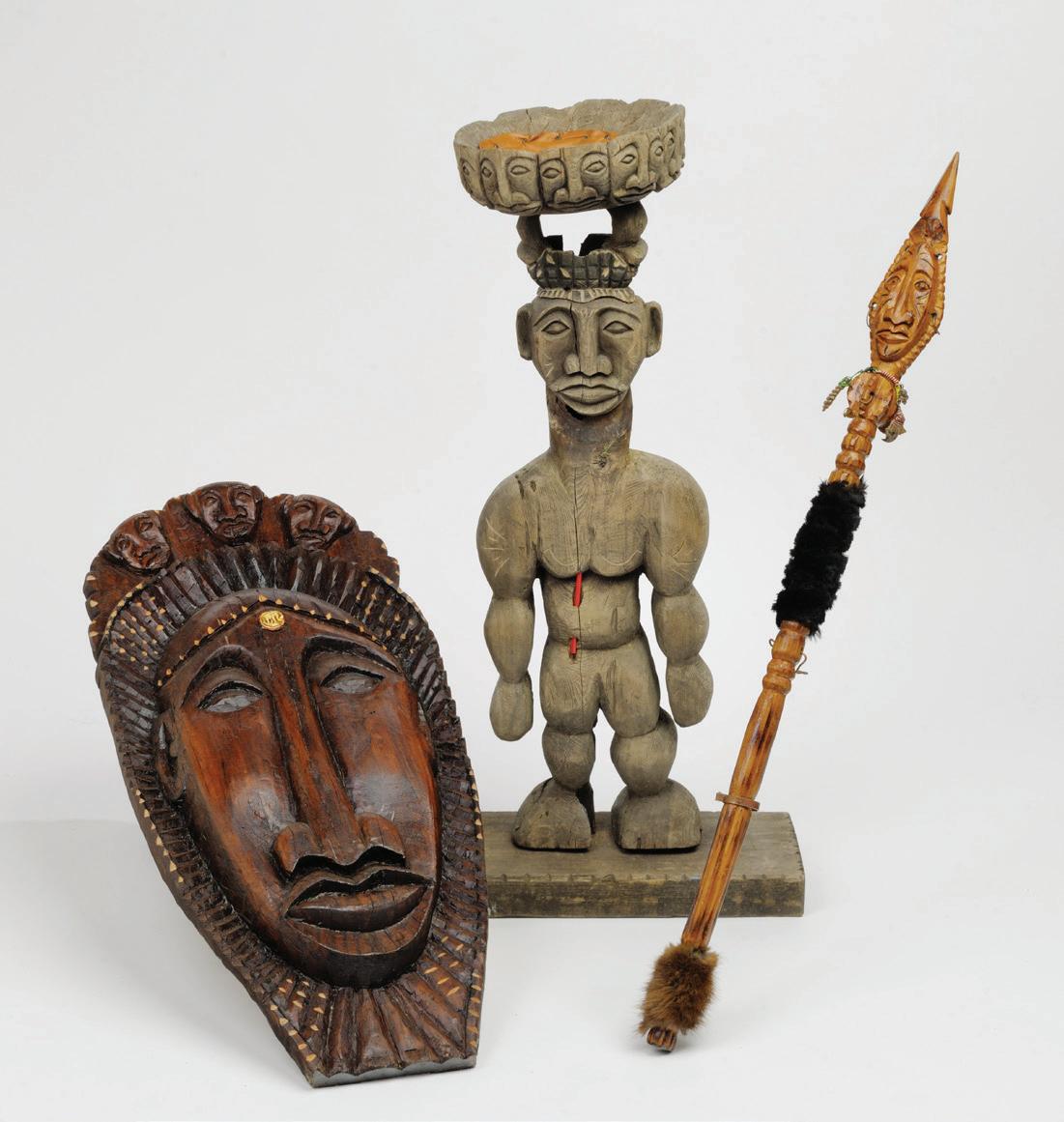
4 minute read
Crafted from Wood
By Wanda Lassiter, Curator
Throughout time, carvers, cabinetmakers, furniture makers, and carpenters have been crafting objects to serve as functional, social, and aesthetic pieces of work. Signatures or marks left by the craftsperson, whether incised or scratched or those of chalk, paint, pencil, or ink, allow a piece of wood to be transformed into a reflection of society, culture, economics, and trade. The exhibition Crafted from Wood, which opens Saturday, November 11, 2023, explores the gift of crafting treasures from wood while highlighting the training and abilities of the crafter.

Adult chairs feature shallow arch splats, double banding on posts, and plainwoven seats. A draw knife, draw bench, spring pole lathe, chisel, mallet, shaving horse, froe, and bit and brace would have been used to craft these chairs.
Housewrights, joiners, and carpenters intermingled with cabinet and furniture makers to craft homes and businesses throughout the Albemarle region. Artisans often served dual roles to maintain a living, many as farmers. Tools, hardware, and finishing materials were purchased from regional merchants or other artisans’ estate sales. These highly skilled craftspeople built homes, schools, businesses, and churches, all components that create a community. Decorative or plain trim work was completed for pay and passion.

Cacace owns her own business of custom carpentry, remodeling, and designing. She is known as “a true and generous woman that believes in thanking the women who blazed a trail for her.”
The exploration of the material culture of craftspeople reveals they were influenced by styles from abroad, fellow crafters, and their sheer determination to succeed in this field. This exhibit will allow visitors to explore, experience, and engage with modern wood crafts to learn how carvers use wood to express their culture, religion, profession, and identity or to connect to their communities.

Built by a member of the Sharrock family, this piece contains a later drawer partition bearing the partial name of Stephen A. Norfleet, used at Woodbourne, his father’s home. William Seay constructed that home.
The exhibit features objects that were crafted in 18th-century furniture-making shops of Thomas White, William Seay, Samuel Black, and Micajah Wilkes. Tools on view will include those used by carpenter and master brick mason Elisha Overton and the Ziegler family of cabinetmakers and undertakers. Families like the Dunbars of Tyrrell County, the Badhams of Edenton, and the Sharrocks of Northampton and Bertie Counties left their mark on our society through the prominence of their crafts. Works crafted by Thomas Day, Henry and Wilson Bruce Evans, and Angela Cacace are among those representing fine North Carolina craftsmanship. See carvings by Chowanoke artist Gerry Lang, Hertford County artist Arliss Watford, and Currituck County artist Joann Drake.

Inventories include planes, chisels, calipers, saws, a rounding knife, squares, a glue kettle with brush, axes, plumb levels, turning gouges, hammers, and wooden patterns.
This exhibit acknowledges the individuals and organizations tirelessly working to acquire, restore, and save furnishings and structures for the rich treasures that they are. Housewrights and master carpenters who hone their restoration skills to help preserve homes, churches, and other structures and the regional cabinetmakers offering workshops and classes that allow participants to use traditional techniques and tools from centuries ago. Businesses that teach carpentry and cabinetmaker skills and the architectural historians and expert furniture historians who research and publish materials that allow everyone to learn more about objects Crafted from Wood.

MAN SCULPTURE WITH BOWL AND STRAW, 2012
ORNATE WALKING STICK WITH BONE AND SNAKE FRAGMENTS, 2012
Carved by African American folk artist William Baxton of Washington County. He often used local wood to create folk art. Some of his carvings have paint, fur, deer antlers, or mirrors applied.

This Thomas Day piece features sleigh-shaped arms with a scalloped fingerhold, a slanted seat with circular cut-out, chamfered foot, and cyma-curve.










